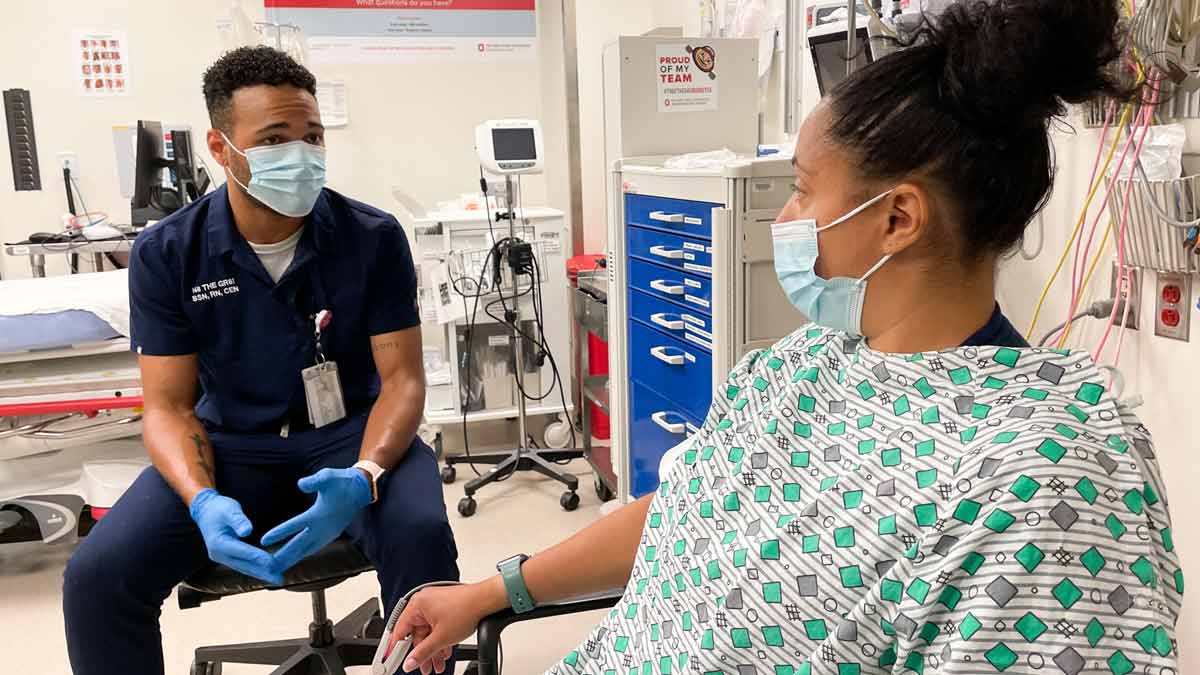Addressing racial inequities through the flu shot
Clinical team focuses on access, listening and conversation to change health disparities
Young and healthy, Melanie Hill didn’t think she needed to get an annual flu shot. It wasn’t until she was married and expecting her first child that she learned about the importance of the vaccination from her obstetrician.
“I just felt it was something that wouldn't affect me, or if I got the flu, I didn't see it as a serious threat to my health,” says Hill. “But I’ve learned a lot since then, that it kills a lot of people actually every year. And so now, I’d rather just be better safe than sorry and get the flu shot.”
The flu vaccine is one of the most effective ways to protect yourself and those around you from illness. However, flu shots and other preventive health resources aren’t offered or accessed equally across different racial groups.
According to the Centers for Disease Control and Prevention, Black and Hispanic people have higher rates of severe illness, hospitalization and death from the flu, compared to the white population, and significantly lower rates of vaccination against the flu. During the 2019-2020 flu season, 53% of white people received the flu shot compared to 41% of Black people and 38% of Hispanic people.
The Ohio State University Wexner Medical Center is aggressively working to address health care inequities and protect the health of all people, starting with initiatives to improve access to flu vaccines.
“Immunization is our best defense against influenza, and we wanted to make sure all the communities we serve were equally protected,” says Aaron Clark, DO, associate professor of Family Medicine at The Ohio State University College of Medicine, and medical director of the Ohio State Health Accountable Care Organization.
“If there’s a way we can reduce that disparity by providing improved access to the vaccines and addressing the community’s concerns, that is absolutely the right thing to do.”
 To accomplish this, in August 2020, the Ohio State Wexner Medical Center increased the number of flu shots it purchased and created new clinical procedures to offer flu vaccines in its emergency departments, retail pharmacies, primary care and specialty clinics, and inpatient units. A team of nurses called patients in target ZIP codes to encourage flu vaccination and respond to patient concerns. Additionally, the health system hosted drive-thru flu shot blitzes and pop-up flu shot clinics with community partners and deployed a mobile health unit to provide flu shots in underserved communities.
To accomplish this, in August 2020, the Ohio State Wexner Medical Center increased the number of flu shots it purchased and created new clinical procedures to offer flu vaccines in its emergency departments, retail pharmacies, primary care and specialty clinics, and inpatient units. A team of nurses called patients in target ZIP codes to encourage flu vaccination and respond to patient concerns. Additionally, the health system hosted drive-thru flu shot blitzes and pop-up flu shot clinics with community partners and deployed a mobile health unit to provide flu shots in underserved communities.
As a result of these efforts, the Ohio State Wexner Medical Center’s emergency departments administered 10 times the number of flu shots to non-white patients by March 2021 than during the 2019-2020 flu season. The academic medical center is applying the lessons learned to COVID-19 vaccination and preventive measures like diabetes checks and cancer screenings.
“If we can figure out how to improve immunization rates against influenza, a lot of those same lessons can be transferred over to our COVID-19 immunization efforts,” Clark says. “I think what made our initiative successful in the locations that we rolled this out this past season was the fact that there was a trusted individual standing right next to the patient, answering their questions honestly and openly, without judgment or any type of preconceived ideas about whether there was hesitancy or not around the immunizations.”
Now a champion for health and wellness among her peers, Hill, who is Black, continues to raise awareness of health disparities in her sphere of influence.
“I just talked about my experience with it with them and I try to offset any type of myths that I hear or misinformation that I've heard,” she says. “The next step after awareness is to respond and do something about it. So to me, it’s a natural step that we are going to be teaching our kids more about prevention, and our population in general is going to be more aware that these disparities exist.”





